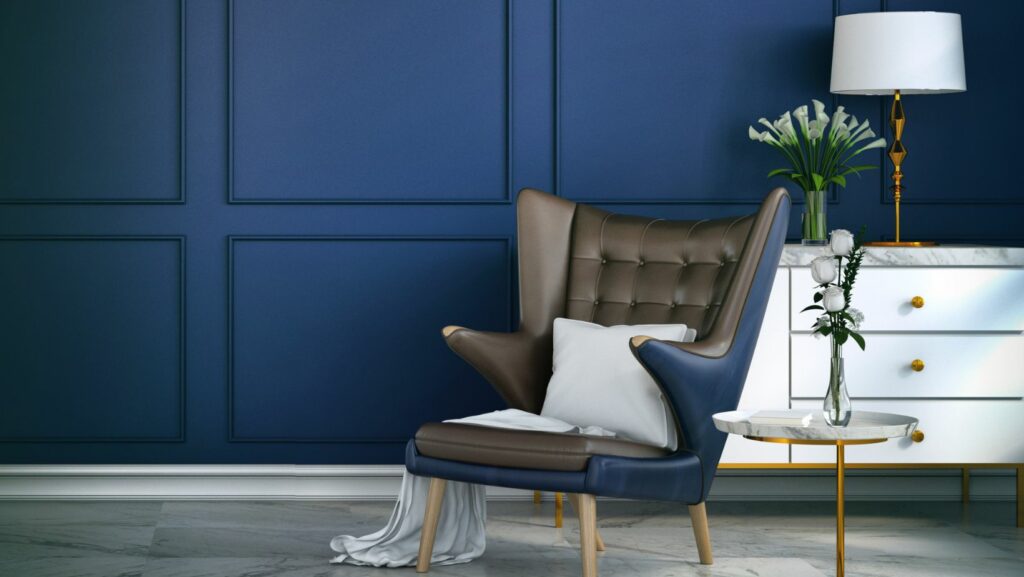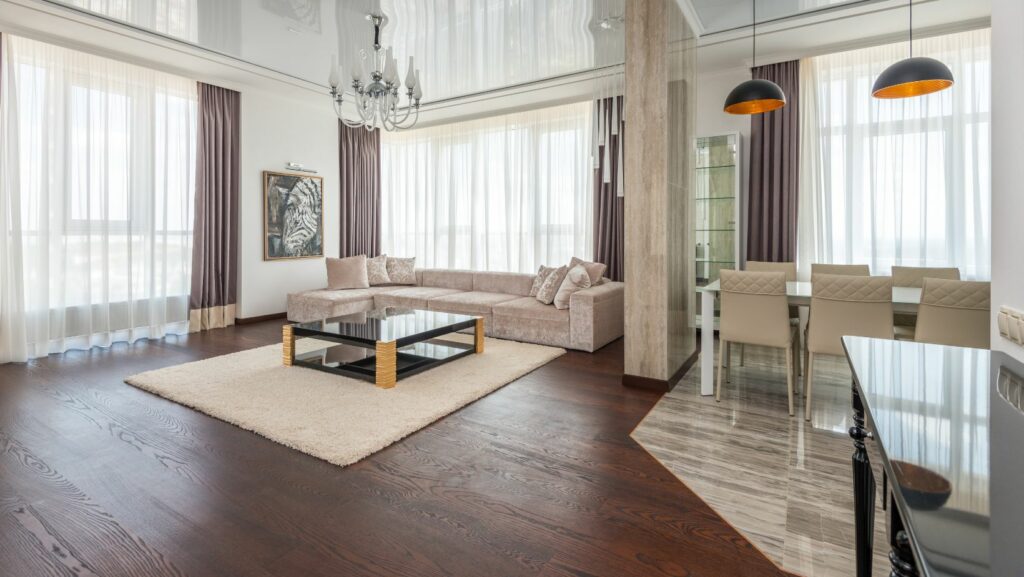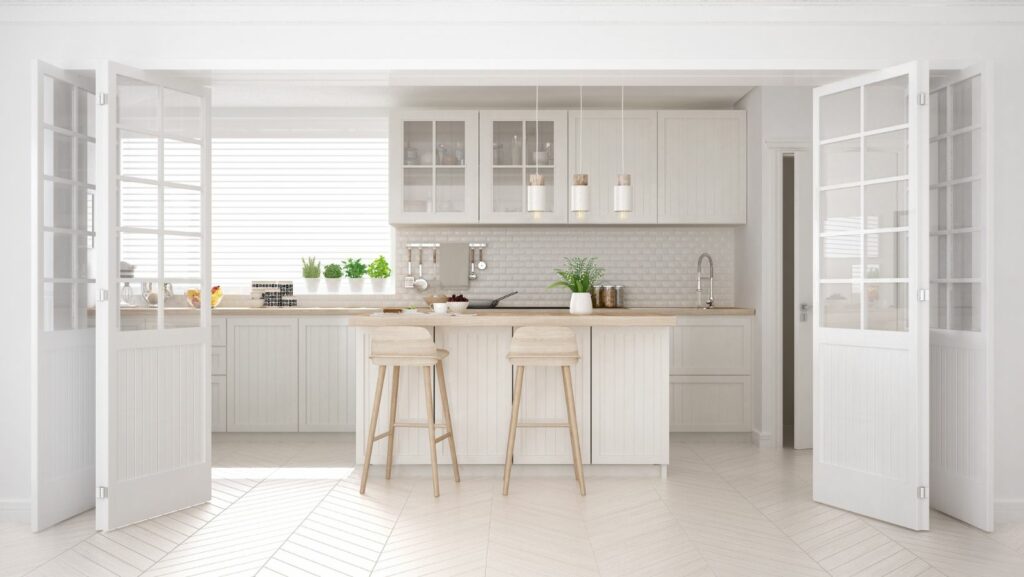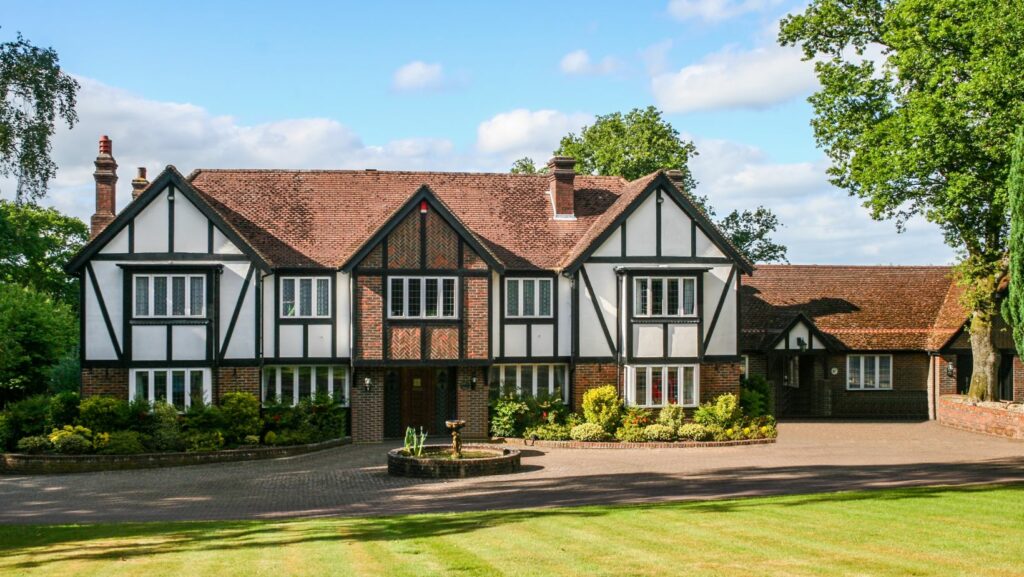Imagine stepping into a room that exudes elegance, sophistication, and a timeless sense of style. This is the allure of classic French interior design. It’s a style that’s steeped in history, yet remains relevant and desirable in modern homes across the globe.
Classic French Interior Design

Starting with a peek into history, Classic French Interior Design originated in the 17th and 18th centuries. It’s characterized by regal Louis XV styled furniture, ornate baroque details, and gilt accents. Velvet, brocade, and silk, fabrics renowned for their lush appeal, dominate this design style, providing a visually rich interior full of texture and depth.
Anchoring these elements is the subtle color palette. Unlike other design styles that might incorporate vibrant, bold colors, Classic French Interior Design typically employs softer, pastel hues coupled with neutral tones. Shades like dove gray, soft cream, pastel blue or muted gold are commonly used.
Maintaining balance plays a pivotal role in this design style. Symmetry and proportion mark the architectural detailing of space in Classic French Interior Design. The clever use of furniture placement, emphasizing balance and harmony, results in an elegant and inviting space.
Origins of French Interior Design
Tracing French interior design’s roots, one ventures back to the 17th and 18th centuries. Nobility started the trend with their regal Louis XV furnishings, defining the era. Echoes of baroque details, ornate and intricate, were indicative of this period. Rich fabrics, including velvet and silk, became standard, introducing an era of opulence and grandeur into French homes. Pastel hues, coupled with neutral tones, emerged as the favored color palette, crafting the visually rich texture inherent in French Interior Design. The necessity of balance became apparent, achieved via meticulously planned furniture placement. This approach ensures symmetry and proportion, elements crucial to creating harmonious spaces.
Influential Periods in French Design

Building on the historical background, French interior design has evolved over various eras, each influencing the style differently. The 17th-century Baroque period, for instance, introduced lavish ornamental details and dramatic elements, infusing interiors with a sense of grandeur. Transitioning into the 18th century, Rococo style took the stage, characterized by playful, whimsical ornaments, and an array of pastel tones. Neoclassicism emerged in the last part of the century, marked by a return to symmetry, clean lines, and interest in antiquities.
Additionally, French design paid tribute to different styles during the 19th-century, including Napoleon III’s eclectic Romanticism and the delicate artistry of the Louis-Philippe style. The 20th-century’s Art Nouveau moved towards nature-inspired elements, whereas Art Deco, with its geometric patterns and metallic colors, celebrated glamour.
Essential Elements of Classic French Interior Design

Embracing key elements, a traditional French interior leans heavily on a few distinctive aspects. Delicate moldings (for example, intricate trim around doors and windows) define the sophisticated aesthetic. Furniture plays a crucial role, boasting details like curved lines, cabriole legs, and ornate carvings. Incorporating vintage pieces, often from the Louis XV era, adds a layer of authenticity. Textiles, exemplifying the glamour, include decadent fabrics such as silk, brocade, and Toile de Jouy. Color schemes often use elegant neutral tones peppered with soft pastels – embodying an air of subtlety with a splash of vibrancy involved. Luxurious lighting fixtures, especially crystal chandeliers, cast a warm glow throughout the room. Careful attention to symmetry, seen in furniture arrangement or mirror placements, leads to balanced and harmonious interiors.
How to Incorporate Classic French Design in Modern Homes
Embracing classic French interior design isn’t about recreating Versailles in your living room. It’s about capturing the spirit of French elegance and sophistication in a way that complements modern living. By incorporating elements like Louis XV furniture, decadent textiles, and luxurious lighting fixtures, you’re adding a touch of timeless appeal to your space. Paying attention to details such as delicate moldings and cabriole legs can make a significant impact. And remember, balance and symmetry are key. Whether it’s through the arrangement of furniture or the placement of mirrors, achieving a harmonious space is crucial.



